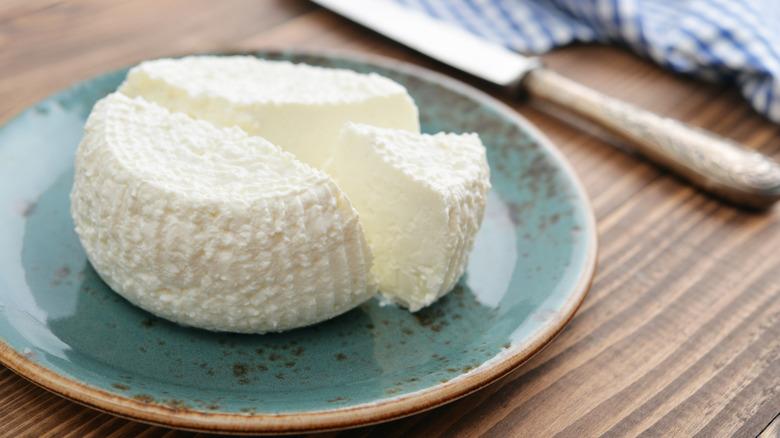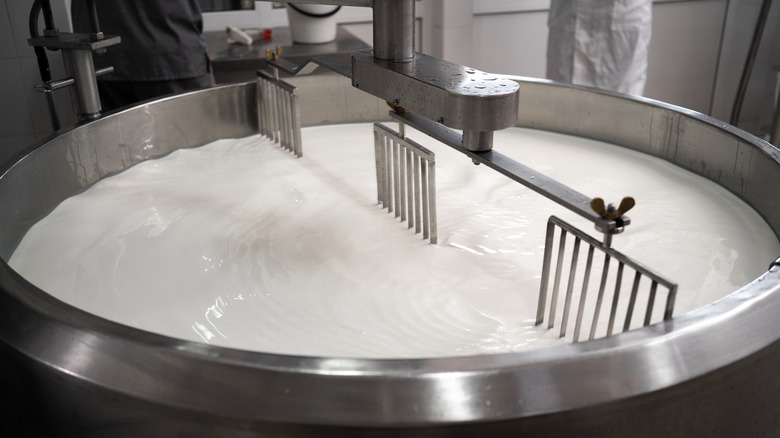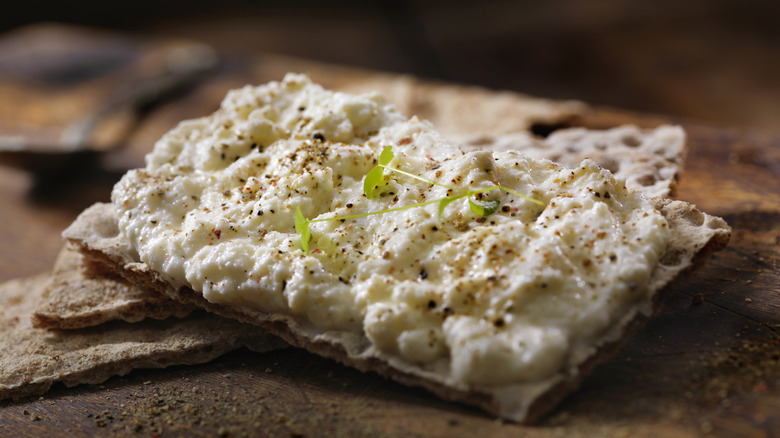The One Mistake To Avoid When Making Ricotta Cheese At Home
Ricotta cheese — it's a workhorse that really deserves more due than it's traditionally been given. It's the backbone of favorites like lasagne, baked ziti, and ravioli. It plays nicely with other flavors while offering its own unctuousness and milky flavor. It's perfect spread on crackers topped with a small crushing of black pepper. On toast with bacon jam, it's transcendent. Ricotta is an all-star cheese and one that's a cinch to make yourself with just a few ingredients.
The basic process behind making ricotta is simple and easily done at home. However, its simplicity doesn't mean it can't go wrong. It's a forgiving cheese, but there is one big way to ensure failure, and it's all about the milk. Ultra-pasteurized milk is the one thing you want to avoid when getting ready to make ricotta, because it results in a cheese that is lacking the crumbly, almost fluffy, texture that the cheese is historically known for.
Milk can be too pasteurized when it comes to cheesemaking
Ultra-pasteurized milk (also known as UHT milk) is not your friend if you want a ricotta that's light and delicious when done. Pasteurization refers to the process of taking milk and heating it briefly to 161 degrees Fahrenheit for 15 seconds in order to kill bacteria and make it safe to drink. Ultra-pasteurization goes even further and heats the milk to 280 degrees for just a couple of seconds. Pasteurization is a good thing — it's what makes milk safe to drink — but ultra-pasteurized milk is taken to the next level. Unfortunately, this leads to problems when it comes to cheesemaking.
That higher temperature during ultra pasteurization naturally does more to kill bacteria and the result is a milk that lasts much longer than what you usually pick up at the grocery store. That same higher temperature also means that curds won't form correctly when using this kind of dairy to make ricotta. Shelf-stable milk is a good thing, but a good cheese depends on a nicely formed curd, so ultra pasteurized milk just won't cut it for ricotta.
Making ricotta is easy once you have the right milk
As long as you've skipped the ultra-pasteurized stuff, you're ready to make some cheese. Ricotta calls for milk, lemon, a bit of salt, and time. If you want to get really fancy, you can use buttermilk and cream as the dairy component in your homemade ricotta for extra richness and wonderful texture. After heating the milk in a double boiler, add the lemon juice and salt to create curds. You can control the dryness of your final product by how much you strain the cheese from the remaining whey,
Once finished, that creamy, crumbly cheese is the perfect spread on toast or crackers with a bit of salt and pepper to bring out the cheese's freshness. It's good with crunchy snacks, but if you're going to go all out and make ricotta at home, we say why not really go all out and use it in a big dish of homemade stuffed pasta? Or you could follow in Giada De Laurentiis' footsteps by making lemon ricotta pound cake for dessert. Homemade ricotta's likely to become a regular resident in your fridge once you realize how easy — and indulgent — it is (especially when using the highest quality milk you can get your hands on).


